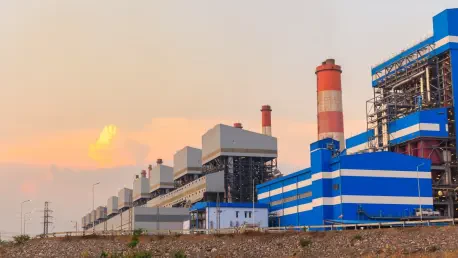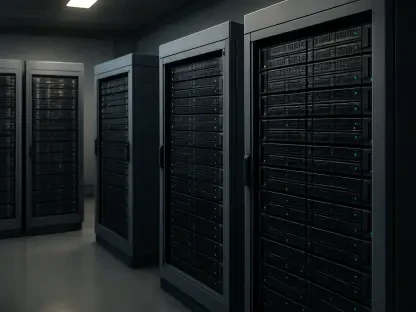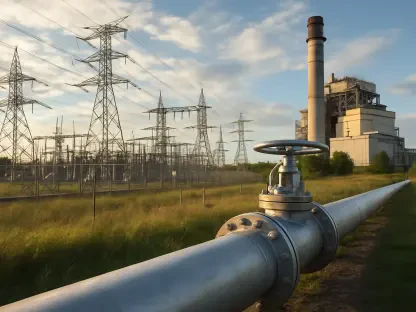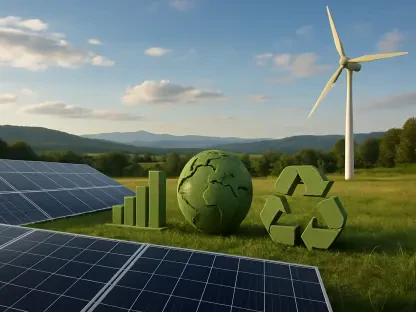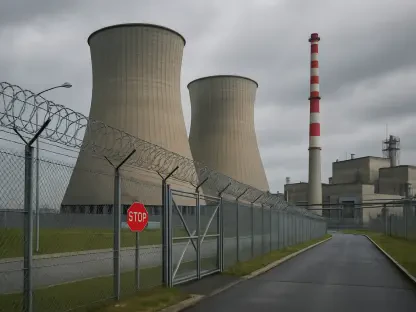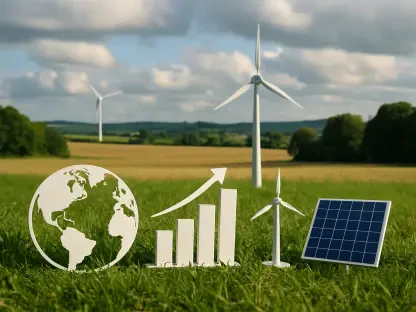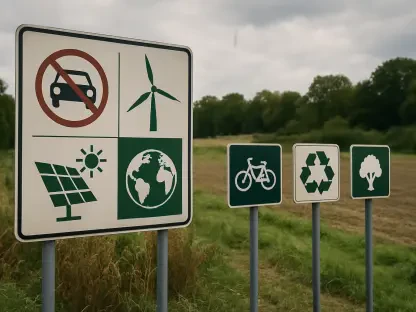Nuclear energy stands at the forefront of contemporary discussions on sustainable power sources, presenting a critical opportunity for the United States to embrace carbon-free generation. Amidst the urgent quest to minimize greenhouse gas emissions, a proposal from past administrations to enhance America’s nuclear power capacity has resurfaced, igniting debate on its feasibility and safety. The proposition aims to significantly increase nuclear energy output, suggesting that nuclear technology could serve as a pivotal element in achieving substantial carbon reductions. However, this vision has been met with resistance from environmental groups, challenging its position as a clean alternative to fossil fuels. The dialogue surrounding nuclear energy thus involves not only an analysis of advanced capabilities but also a confrontation with opposition rooted in environmental and safety concerns, creating a dynamic discussion on the future of American energy policy.
Examining the Potential for Expansion
International Model of Success
The possibility of expanding nuclear power in the U.S. has been demonstrated on an international stage by countries like France, whose successful model offers a promising illustration of nuclear energy’s potential. Beginning in the 1970s, France embarked on a national project to amplify its nuclear energy capabilities, resulting in more than 60 percent of its electricity being generated from nuclear sources by the mid-1980s. This strategic expansion has enabled France to become one of the world’s paramount exporters of low-cost electricity, underscoring nuclear power’s ability to provide stable, carbon-free energy. France’s journey reveals a practical framework echoing the proposed ambition for the U.S., suggesting that substantial nuclear capacity is not only achievable but can play a vital role in reducing carbon emissions while contributing to energy independence.
Bringing the Vision to Reality
While the theoretical aspiration to substantially increase nuclear energy output in the U.S. exists, realizing this vision demands rigorous dedication to technological development, policy-making, and resource management. Unlike renewable energy sources, nuclear energy offers unparalleled reliability, proposed to operate at a capacity factor exceeding 90 percent, as highlighted by the Department of Energy. Such a high capacity factor emphasizes nuclear power’s ability to continually produce electricity compared to intermittent sources like wind and solar, which fluctuate according to environmental conditions. The journey toward nuclear expansion involves not only advanced infrastructural investment but also a shift in public perception and political stance, necessitating comprehensive strategic planning and international cooperation to achieve the desired impact on America’s carbon footprint reduction.
Opposition from Environmental Organizations
Crux of Environmental Concerns
Despite the promising outlook, nuclear energy faces staunch opposition from leading American environmental organizations like the World Wildlife Fund (WWF) and the Sierra Club. These nonprofits assert that nuclear technology is fundamentally dirty, dangerous, and unsustainable, influencing policy debates through persistent advocacy for renewable alternatives. Their narrative often aligns nuclear power with fossil fuel emissions, advocating a systemic phase-out in favor of wind, solar, and other renewable sources. The opposition is not without historical precedent, drawing attention to nuclear accidents like Chernobyl and Fukushima to punctuate perceived dangers. This significant resistance forms an intrinsic obstacle to nuclear power expansion, demanding a balanced examination of socio-political dynamics and environmental impact.
Nuclear Safety Record and Environmental Impact
Counterarguments emphasize nuclear power’s exemplary safety record, illustrating a stark contrast to the prevalent environmental concerns. The operational record of the U.S. Navy’s nuclear-powered vessels, extending over seven decades without major incidents, highlights the robust safety protocols synonymous with modern nuclear technology. Furthermore, statistical analyses present nuclear power as markedly safer than coal, oil, and natural gas, indicating significantly lower fatalities per unit of electricity generated. Points of contention relating to environmental impact often revolve around radiation exposure and waste management, requiring continued advances in reactor design and waste disposal methodologies. Proponents of nuclear energy argue that modern reactors are engineered with advanced safety systems, diminishing risk potential and enhancing environmental stewardship compared to older models implicated in past accidents.
Technological Advances and Sustainability
Addressing Resource Resilience
A pivotal factor underpinning nuclear expansion is the availability and resilience of uranium resources, vital to sustaining long-term nuclear operations. Current assessments elucidate that existing uranium reserves could potentially uphold current consumption levels for nearly two centuries, reflecting a stable foundation for nuclear expansion. Emerging technologies such as breeder reactors could enhance uranium utility, further extending the lifespan of nuclear fuel. Moreover, scientific endeavors targeting fusion reactors, although still in exploratory phases, promise a revolutionary advancement in energy generation, offering a nearly limitless power source. These developments highlight nuclear energy’s adaptability and resilience in the face of evolving energy demands, presenting strategic opportunities for bolstering sustainable power solutions.
Innovations in Reactor Design
With the backdrop of advancing technology, innovations in reactor design are poised to redefine nuclear energy’s role within the comprehensive energy strategy. Contemporary reactors incorporate next-generation systems featuring passive safety mechanisms and efficient fuel use, minimizing waste production and elevating safety standards. Such innovations mitigate the risks traditionally associated with nuclear energy, ensuring operational reliability and public assurance. Furthermore, small modular reactors (SMRs) challenge conventional reactor systems by offering scalable solutions suitable for diverse geographic and industrial landscapes. These modular designs cater to specific energy requirements with reduced initial investments, enabling wider accessibility and integration into multifaceted energy grids. The alliance of technological innovation with strategic deployment positions nuclear energy as a formidable ally in achieving a thriving, carbon-free power landscape.
The Future of American Nuclear Power
Bridging Politics and Technology
Navigating the complexities of nuclear energy expansion in the United States requires a synthesis of political will and technological advancement, bridging gaps between environmental concerns and resource deployment. Political rhetoric must converge with scientific innovation to forge a path toward an inclusive energy strategy, revitalizing legislative frameworks surrounding nuclear infrastructure and investment. This bridging effort extends beyond domestic policies, mandating collaboration with international counterparts to adopt successful models and pioneer new methodologies. Confronting the discourse surrounding energy diversity places nuclear power as a pivotal contributor to carbon-free aspirations, augmenting renewable efforts to cater to evolving energy demands, while addressing underlying political and environmental challenges.
Reframing Public Perception
To change the way nuclear energy is perceived, it’s crucial to focus on informed conversations highlighting modern advancements and safety protocols. Educational efforts that clarify nuclear technology can boost community involvement and address misconceptions rooted in past events. Enhancing communication through media, educational outlets, and community outreach paves the way for constructive dialogue and informed choices. Engaging the public in meaningful discussion underscores nuclear energy’s significance as a vital part of achieving carbon neutrality, rather than just an alternative. By focusing on safety, scalability, and sustainability, we can gain societal acceptance, sparking detailed conversations about nuclear energy’s role in America’s energy future.
As the U.S. considers sustainable energy solutions, nuclear power stands out as a viable answer to the carbon emissions challenge. By navigating policy and technological nuances and going beyond opposition to embrace innovation, nuclear energy can reshape American power generation. This comprehensive energy strategy includes new designs and tech advancements, aiming to secure both energy autonomy and global environmental goals through balanced discussions on safety and sustainability.
